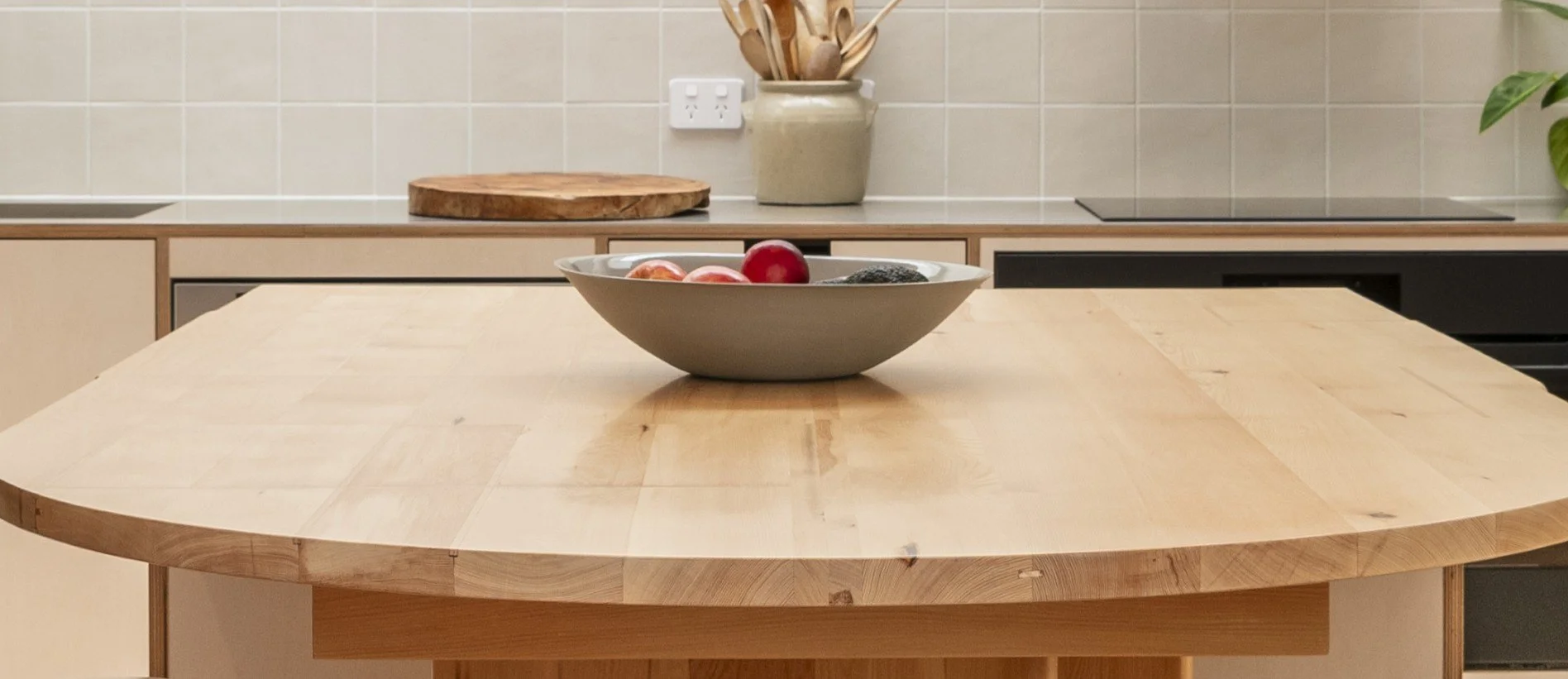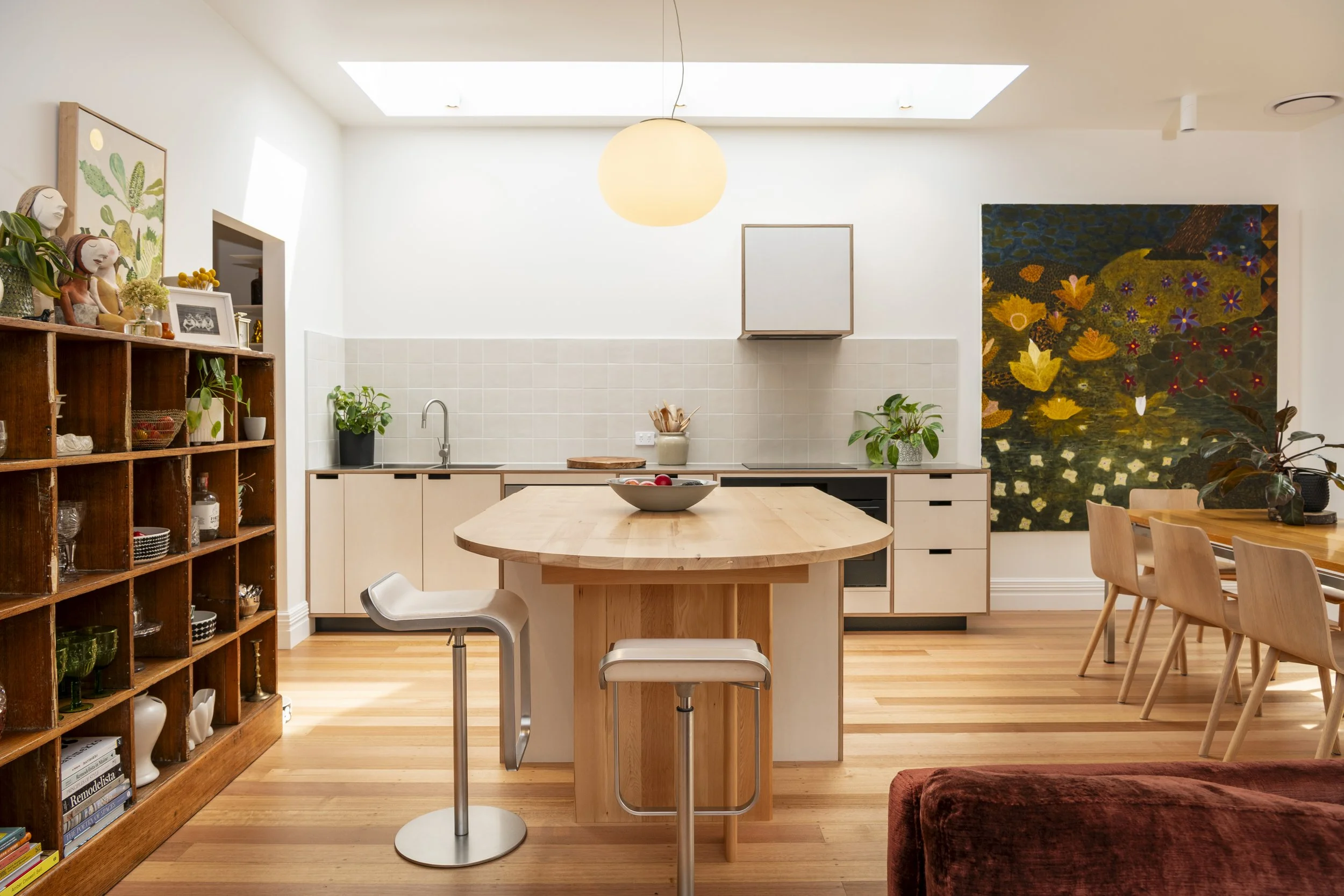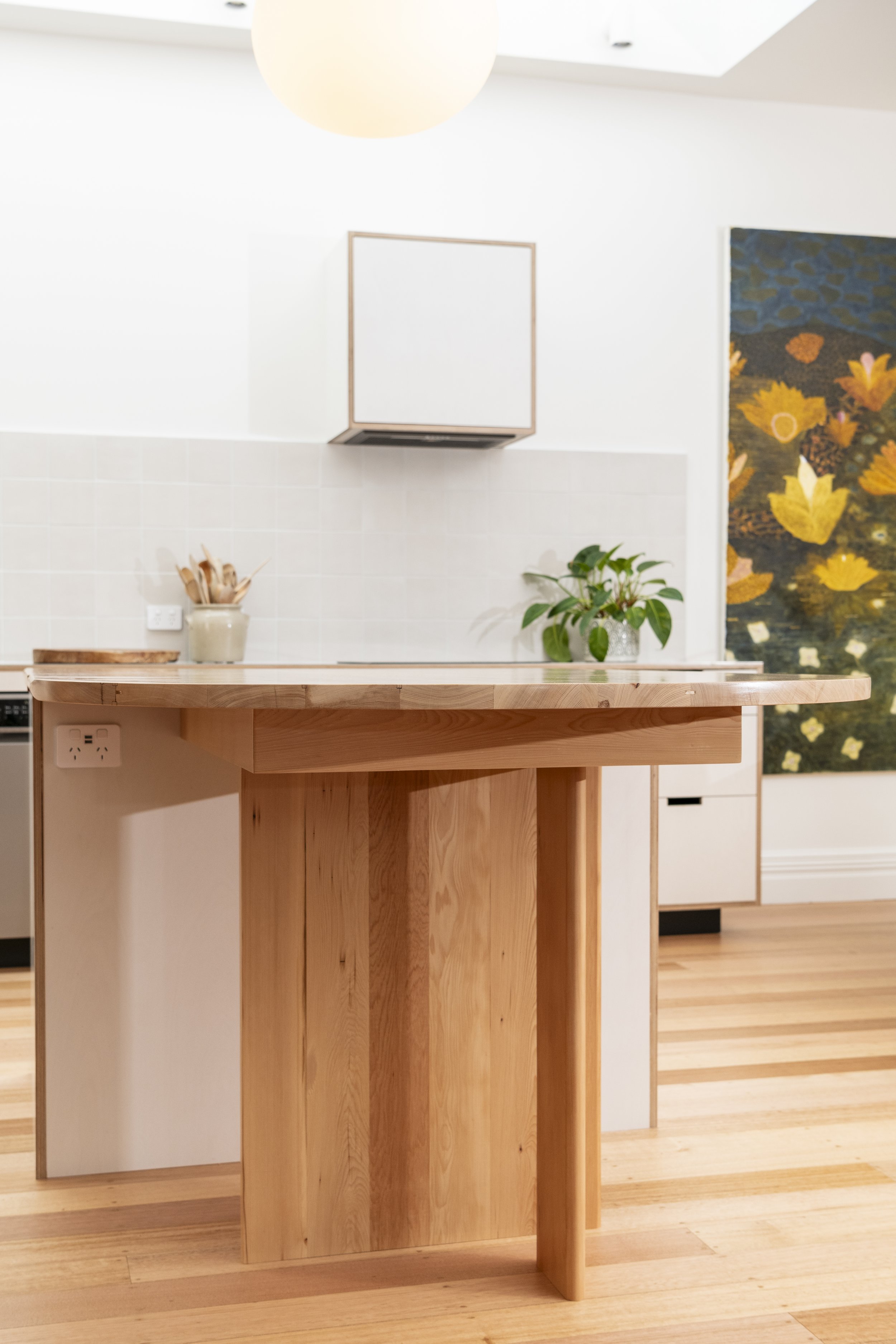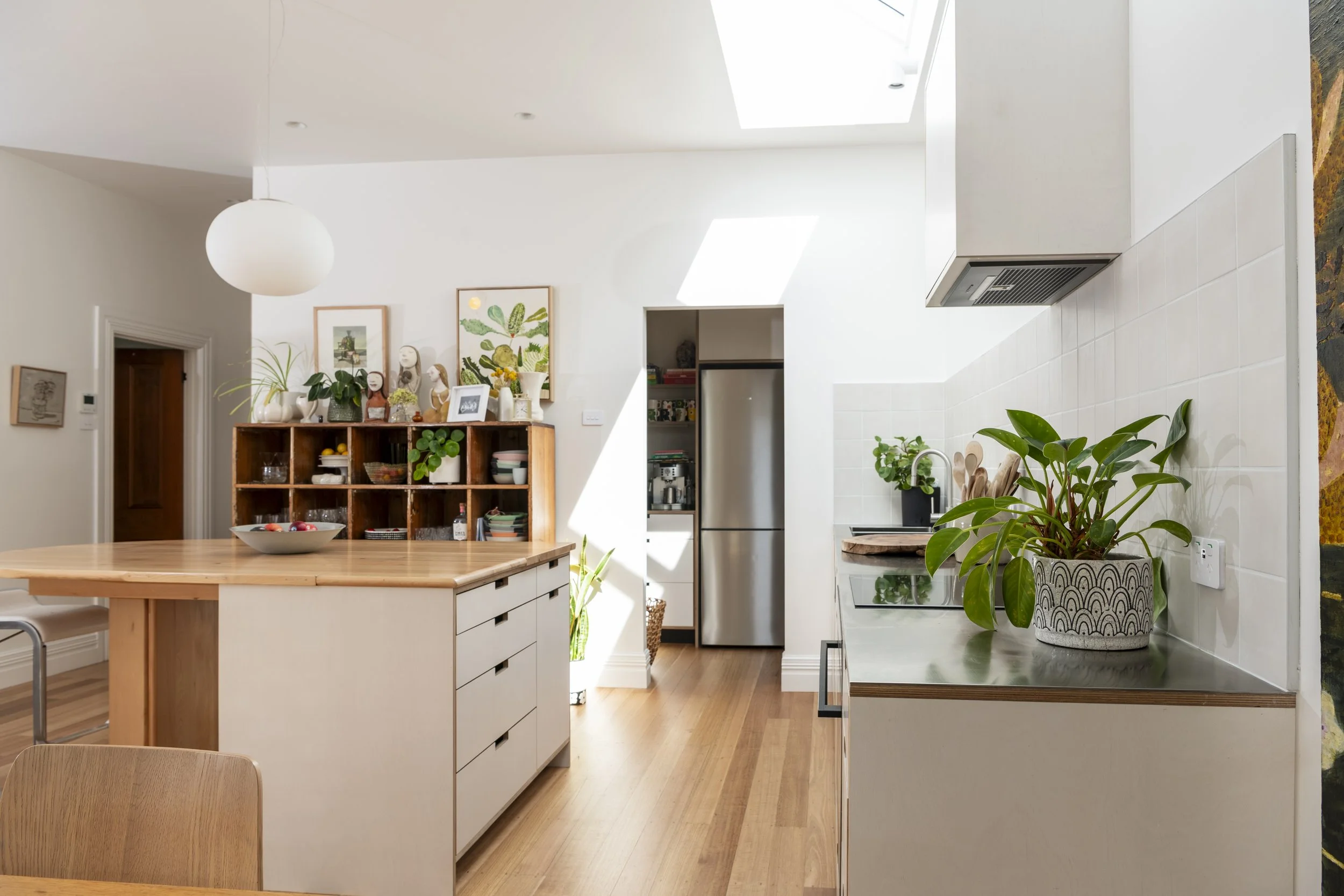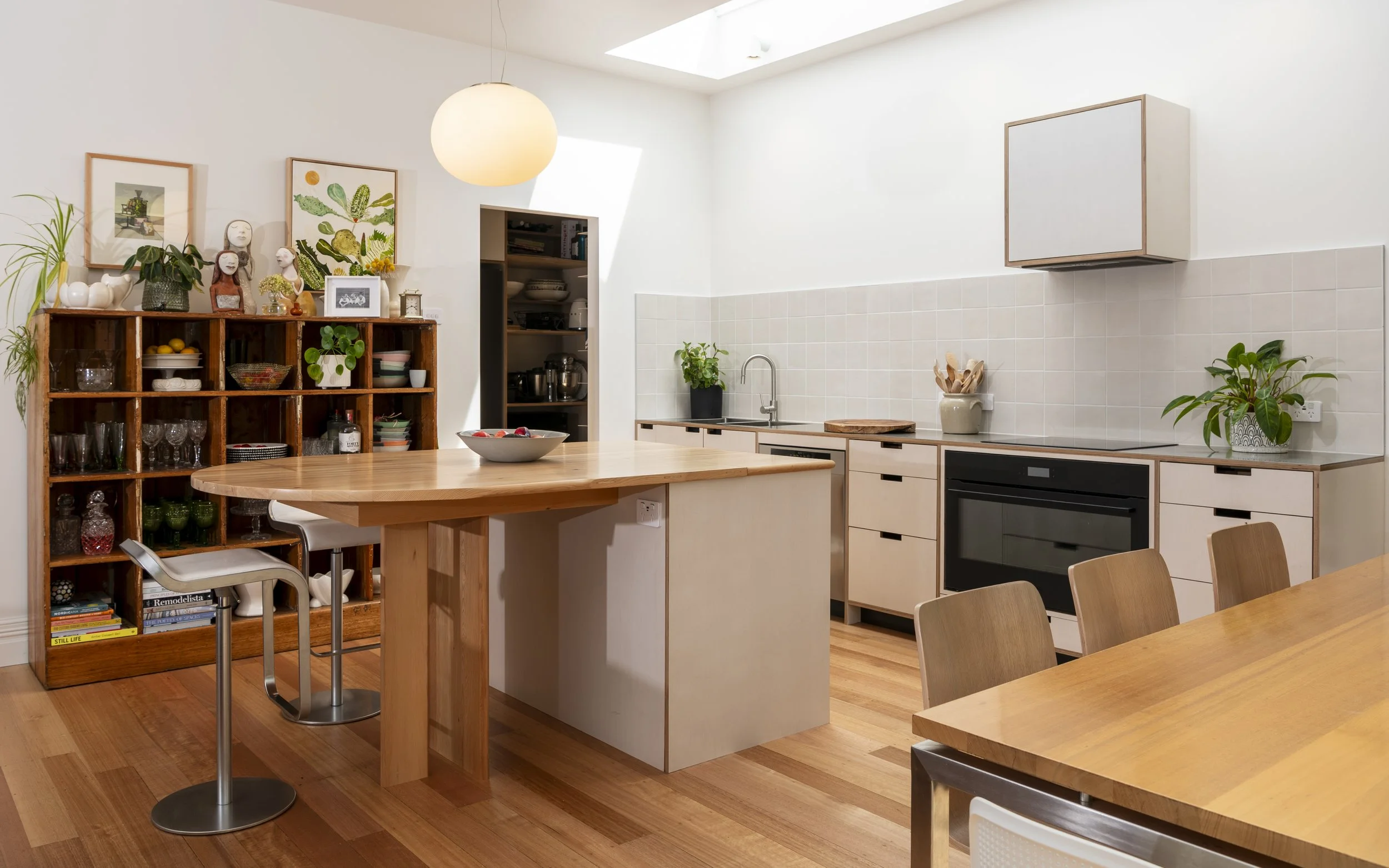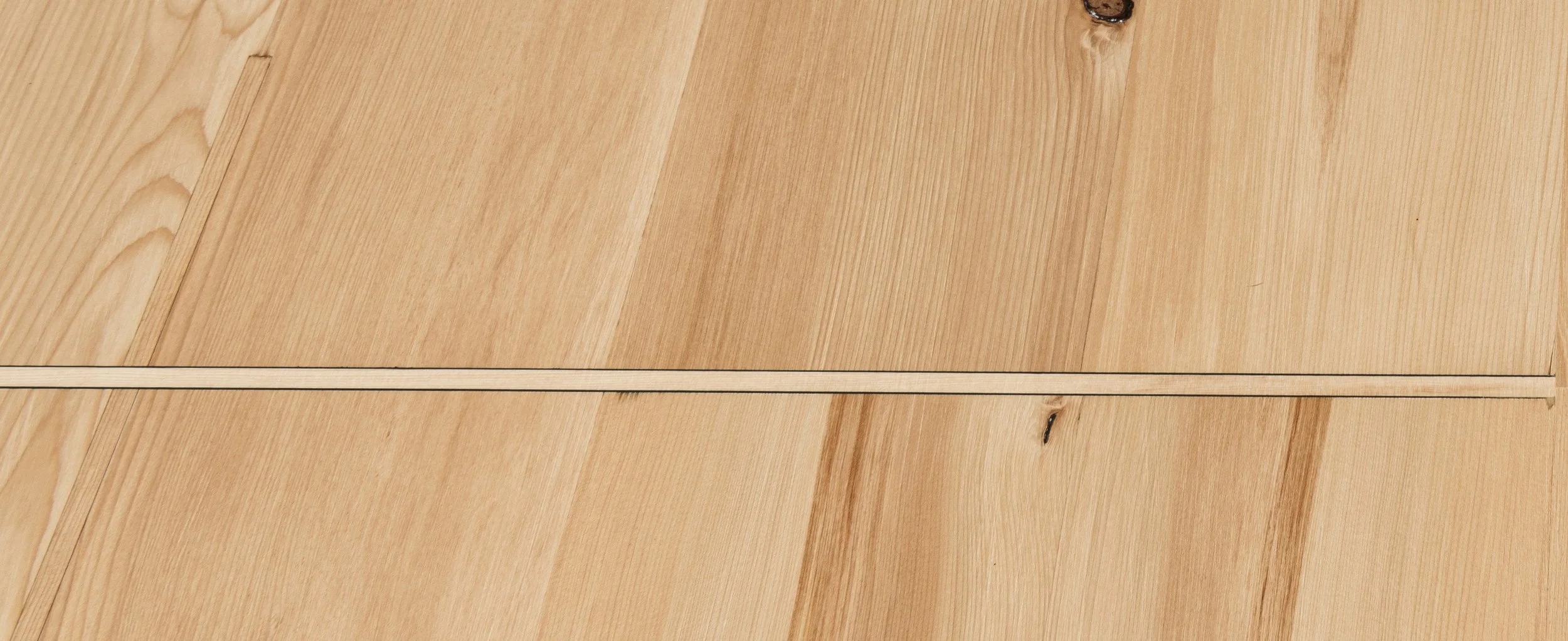The Longer Story
What happens when we begin with what already exists?
Twenty-five years ago, these clients installed a Celery Top Pine kitchen when their third son was born. It witnessed countless birthday cakes, roast dinners, Christmases, and the everyday moments of raising three boys. When they decided to renovate, the homeowner was adamant: she wanted the ‘new clean magazine look’ and planned to sell the old kitchen for perhaps $2,000.
But as we talked about the space and it’s history, something shifted. She couldn’t stop thinking about the timber - about her family and the memories created there. What began as a conventional replacement project became an exploration of how materials themselves can carry and transmit meaning.
The result: their ‘outdated orange’ timber became the centrepiece of their new kitchen, transformed into an island bench that invites touch, sparks conversation, and honours twenty-five years of family life.
Rather than imposing a predetermined design onto new materials, I began with what existed: timber that held two and a half decades of family history. The challenge was preserving not just the material but its recognisable character - the authentic edges that referenced the original kitchen layout, the visible joins between pieces, even the deliberate imperfections that told stories of use and repair.
I maintained the original bullnose edges where possible, left construction details exposed rather than concealed, and created a curved end that invites people to gather. A teardrop-shaped timber insert repaired water damage in an area where family meals were prepared, its unique form driven by structural necessity rather than aesthetic convention.
This approach challenged conventional kitchen design at every turn. Where standard practice prioritises uniformity and precision, I celebrated irregularity and visible history. Where typical renovations conceal construction methods, I revealed original joinery. The result is a benchtop whose character comes not from manufactured perfection but from authentic material history.
The homeowner’s response: ‘The kitchen bench. They love to feel it. Everyone sort of walks in, stands right near it, and then they just run their hands over it, feeling it because it just looks so lovely.’
People naturally stand at the island and engage with the material through touch, spending extended time exploring the varied surfaces and visible joins. The kitchen became not just functional space but a catalyst for storytelling about material origins and family history.
The space functions better too - more room around the dining table, better flow, natural gathering patterns. But what makes it meaningful isn’t just improved function; it’s the preservation of accumulated history that makes the space genuinely theirs.
